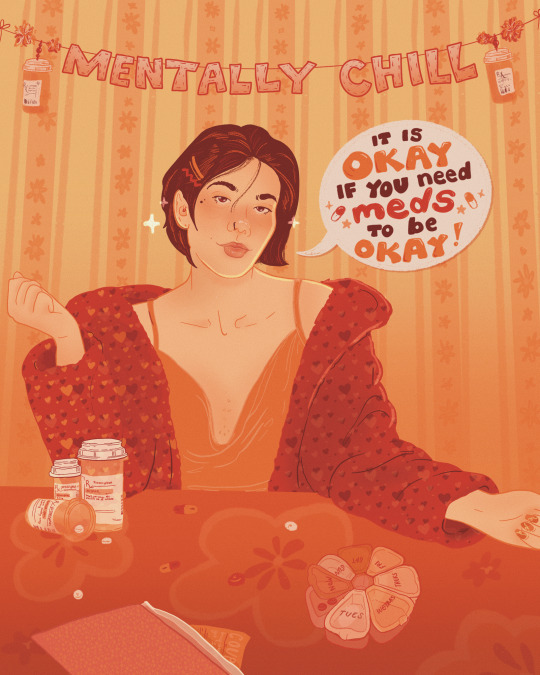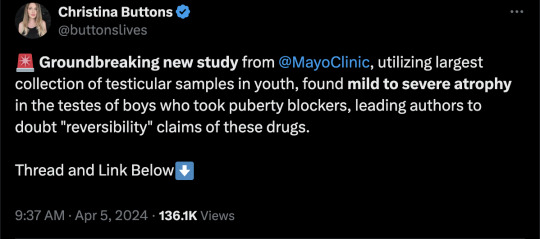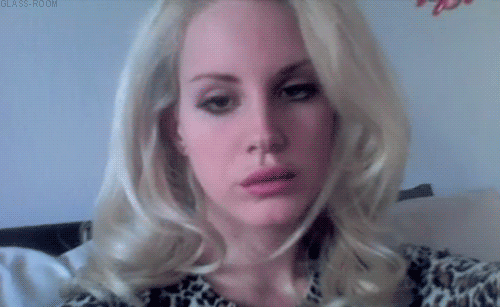#feminism is a mental illness
Text
so I was watching the first episode of Wednesday, got through the first 26 minutes and I had to turn it off because she had to complain that a male rescuing her is “sexist” I WILL NOT be watching anymore of that
oh yeah and she hates her mother because she’s a stay at home wife
for crying out loud, Morticia Adams is an icon, she loves her husband and children and is loved by many generations
fucking hollywood
#wednesday#feminist trash#anti feminist#ask me stuff#ask me anything#brainwashing girls to hate boys#feminism is a mental illness#no thank you#wednesday adams
5 notes
·
View notes
Text
Sylvia Plath was right…
"Being born a woman is an awful tragedy. Yes, my consuming desire to mingle with road crews, sailors and soldiers, bar room regulars-to be a part of a scene, anonymous, listening, recording -all is spoiled by the fact that I am a girl, a female always in danger of assault and battery. My consuming interest in men and their lives is often misconstrued as a desire to seduce them, or as an invitation to intimacy. Yet, God, I want to talk to everybody I can as deeply as I can. I want tö be able to sleep in an open field, to travel west, to walk freely at night."
#girlblog#girlblogging#just girly things#female hysteria#ultraviolence#sylvia plath#feminine rage#female rage#litterature#writers and poets#im just a girl#girl reading#feminine urge#female#feminism#hyper feminine#im just mentally ill#mentally unstable#girlhood#girl hysteria#gone girl#girl interrupted#the feminine urge#female manipulator#female urge
1K notes
·
View notes
Text
Friendly reminder that if you support reproductive rights and bodily autonomy but say that disabled people shouldn't have children because they'll pass down their genes which is "cruel" or "abusive", you do not support reproductive rights and bodily autonomy. Reproductive rights do not only concern abortion for cis white abled women.
#in a world where people are not ableist and people can get accomodations disability is not pure suffering#so if you want disabled children to have good lives advocate for disabled people#do not support eug*nics#disabled problems#disabled#actually disabled#disability rights#disability#ableism#mental illness#neurodivergent#physical disability#chronically ill#chronic illness#neurological disorder#reproductive autonomy#reproductive rights#feminism
8K notes
·
View notes
Text

ME ME ME
#girlblogger#just girly things#this is what makes us girls#divine feminine#femcel#coquette#girlblogging#this is a girlblog#female rage#just girly posts#mental illness#bisexual#feminism#existential crisis
927 notes
·
View notes
Text

Is this anything
#911#911 abc#911 spoilers#911edit#911 on abc#evan buckley#tommy kinard#bucktommy#kinley#tevan#buck x tommy#kinkley#tuck#pick a name y'all#(pick tevan)#my edits#bi buck#I love you so muchhhh#for context mental illness s1. existential issues s2-6.#idk if he's gotten to feminism yet he needs to be able to see a woman and not date/kiss/ruin things w her first
517 notes
·
View notes
Text

Mentally chill (thanks to my meds)
Digital illustration of a fem wearing a fuzzy coat and tank top. The image has a strong orange color palette and there’s a speech bubble with text that reads, ‘it’s okay if you need meds to be okay.’ There’s a banner overhead that reads, ‘mentally chill’
#art#feminism#mental health#medication#antidepressants#meds#take your meds#mental illness#illustration#orange
798 notes
·
View notes
Text

#girl blogger#girlhood#hell is a teenage girl#lana del rey#girly things#this is what makes us girls#girlblogging#this is a girlblog#just girly things#im just a girl#girl interrupted#girl interupted syndrome#female manipulator#femaledaily#hyper feminine#female rage#divine feminine#female hysteria#feminine sissy#feminism#mentally tired#mentally exhausted#mentally unstable#actually mentally ill#mentally fucked#mental illness#lana del ray moodboard#lana del ray aesthetic#lana stan#lana unreleased
399 notes
·
View notes
Text







276 notes
·
View notes
Text


By: Christina Buttons
Published: Apr 4, 2024

[ Figure 2: Representative images of Hematoxylin and Eosin-stained sections of testicular tissue biopsied from the testis from GD patients (A) with and (B) without PB exposure. ]
In a groundbreaking study from the Mayo Clinic, a globally recognized leader in medical research and patient care, researchers examined the effects of puberty blockers on testicular development in gender dysphoric male children. Their investigation revealed evidence of mild to severe atrophy in the sex glands of these children, leading the authors to express doubt in the claims of “reversibility” often made about puberty blockers.
The authors assert, “We provide unprecedented histological evidence revealing detrimental pediatric testicular sex gland responses to [puberty blockers].”
This preprint study, not yet peer-reviewed, presents evidence that puberty blockers induce significant cellular changes, impacting testicular development and sperm production in ways that are not fully reversible, with potentially permanent effects on testicular function and fertility. It challenges the longstanding view of puberty blockers as a reversible "pause button" on puberty.
As noted by the researchers of this study, no long-term studies exist for the use of puberty blockers in the context of stopping puberty for gender dysphoric children, and many potential health consequences remain unknown. In particular, the long-term impact on reproductive health is uncertain, making this study critical for filling this knowledge gap.
To address these unknowns, the Mayo Clinic has established the largest collection of testicular samples for patients aged 0-17 years, including those with gender dysphoria who have and have not yet received puberty blocker treatment, creating a database of over 130,000 individual cells for analysis.
Using a novel approach, the research team meticulously analyzed testicular tissue samples from youths undergoing puberty blocker treatment, with those not on puberty blocker treatment serving as controls. This comparison provides important insights into the potential cellular and molecular changes induced by these drugs.
Key Findings
The study utilized the Mayo Clinic's Pediatric Testicular Biobank for Fertility Preservation, which has been recruiting patients primarily from pediatric urology departments since 2015. Researchers analyzed testicular specimens from 87 young individuals (ages 0-17) undergoing fertility preservation surgery for various health reasons. Among these, 16 were gender dysphoric boys between the ages of 10 and 16, all of whom began identifying as transgender girls between the ages of 2 and 15. At the time of surgery, 9 patients (56%) were already on puberty blockers, with exposure ranging from 3 to 52 months. The authors noted that 100% of the 16 children would eventually go on to take them, highlighting “the widespread nature of PB intervention in this demographic.”
Among nine patients treated with puberty blockers, two exhibited unusual features in their testicles upon physical examination. One patient had abnormalities in both testicles, including incomplete development of the tunica albuginea, which is a protective covering around the testicles. The other patient had a right testicle that was difficult to detect.
In one part of the tissue-level analysis, over 400 testicular biopsy samples were analyzed and stained to examine the differences between those treated with puberty blockers and those who were not. Comparisons showed that testicular development in those treated with puberty blockers was abnormal compared to non-treated individuals. There was variability in how individuals responded to puberty blockers, leading to different outcomes in testicular development, including the degeneration of testicular tissues.
The study authors presented a case of a 12-year-old patient who underwent treatment with puberty blockers for 14 months. In this individual, 59% of the sex glands showed complete atrophy, along with the presence of microlithiasis—a condition where small clusters of calcium form in the testicles. This insight suggests that puberty blockers could lead to lasting structural changes. Additionally, research has shown a link between testicular microlithiasis and testicular cancer.

[ D) Representative images of normal (top) and fully atrophied sex gland (bottom). ]
This study also utilized single-cell analysis to investigate the effects of puberty blockers and aging on testicular cell composition. It took a very detailed look at individual cells from the testicles of a 14-year-old who had been on puberty blockers for over 4 years. The study analyzed a total of 130,100 cells, including 11,199 cells from the juvenile puberty blocker-treated patient.
The study observed that over 90% of the cells responsible for sperm production in this patient were stunted at an early developmental stage, unable to progress further. Additionally, it found "pathologically" higher and lower levels of two types of support cells (Sertoli cells) necessary for healthy sperm development. These findings suggest that puberty blockers can disrupt the normal maturation process of cells critical for sperm production.
In another part of the analysis, the authors found distinct cell-specific changes, including altered expression patterns of puberty-associated genes in endothelial cells, due to puberty blocker treatment. The authors believe that these drugs might induce juvenile testicular atrophy in part by disrupting the normal function of testicular endothelial cells.
Another aspect of the study focused on examining the effects of puberty blockers on the genetic activity of early-stage sperm cells, revealing significant changes that could potentially influence their development and fertility. By analyzing the activity of specific genes within these cells, the researchers found that puberty blockers may have caused alterations in gene expression, affecting processes crucial for the normal growth and function of these cells. This analysis suggests that the use of puberty blockers in gender dysphoric youth could have lasting implications for their reproductive health, particularly by impacting the ability of these early-stage sperm cells to mature properly.
Study Impact
Puberty blockers are increasingly used as a treatment for gender dysphoric youth to halt the development of secondary sex characteristics, such as breast development and widening of hips in females, or the growth of facial hair and deepening of the voice in males. Thousands of children in the United States are placed on this medical pathway as part of the gender-affirming model of care, under the presumption that these drugs are safe and fully reversible.
However, many aspects of the long-term consequences of puberty blockers, which have been administered to children off-label in an experimental manner, remain unknown. This study contributes valuable insights into the potential irreversible harm these treatments can cause to bodily and reproductive functions.
Arguably, the most critical finding is the evidence of mild to severe sex gland atrophy in children treated with puberty blockers. This atrophy signifies potential damage or impairment to the structures essential for sperm production, raising serious concerns about the long-term fertility impacts of these drugs for these individuals.
Given the Mayo Clinic's esteemed reputation in the medical and research communities, should the study pass peer review without any issues, its findings will carry significant weight.
Broader Implications
Puberty blockers belong to a group of synthetic gonadotropin-releasing hormone (GnRH) analogues. These drugs act on the pituitary gland to hinder the release of chemical signals that typically trigger the production of estrogen and testosterone. Historically GnRH analogues were used to treat conditions such as prostate cancer, fibroids, and endometriosis and, in some cases, as a measure to chemically castrate sex offenders.
In children, puberty blockers prevent the natural changes of puberty driven by sex hormones and have been used to treat central precocious puberty, a condition where a child begins to sexually mature much earlier than usual. In gender dysphoria, puberty blockers are administered experimentally, lacking long-term testing.
Notably, the U.S. Food and Drug Administration (FDA) has not approved puberty blockers and sex hormones for use in pediatric gender care. No clinical trials have substantiated the safety of these drugs for such non-approved applications and manufacturers of puberty blockers have repeatedly declined to conduct safety trials for their use on this cohort.
While puberty-blocking drugs are often promoted as “safe,” "reversible" and a "pause button" on puberty, these characterizations seem to stem from their approved use for treating central precocious puberty in younger children, not their burgeoning off-label use for managing gender dysphoria in adolescents.
Past studies have indicated possible negative effects on bone density and brain health. There is also a concern that these drugs might solidify gender dysphoria in adolescents, potentially leading them down a lifelong road of biomedical interventions. Following reports in 2016 of suicidal ideation in children administered puberty blockers, the FDA instructed drug manufacturers to include a warning about potential psychiatric issues on the drugs' labels.
Puberty blockers are increasingly administered to adolescents at Tanner Stage 2, the first signs of puberty. Research shows administering puberty blockers at this stage, followed by cross-sex hormones, may result in infertility, sterility, and sexual dysfunction. Furthermore, they inhibit the development of mature male genitalia, making it difficult to create a pseudovagina in the event of a later vaginoplasty due to a lack of sufficient tissue.
The National Health Service England recently announced it would no longer prescribe puberty blockers to youth outside of research settings and closed down its only national clinical service for pediatric gender medicine, following a review that deemed the service "not safe.”
Several European countries, including Sweden, Finland, the UK, Denmark, and Norway have updated their guidelines for youth transition to align with systematic evidence reviews, the gold standard in evidence-based medicine. These reviews concluded that the risks associated with youth transition outweigh any purported benefits. Consequently, these countries have implemented restrictions on medical interventions, prioritizing psychotherapy as a first-line response for minors experiencing gender-related distress.
==
They're sterilizing boys and giving them cancer. When "god" does it, we call him evil. When humans do it, we call it "gender affirming care."
#Christina Buttons#puberty blockers#atrophy#medical scandal#medical malpractice#medical corruption#sterilization#fertility#irreversible#gender affirming care#gender affirming healthcare#gender affirmation#queer theory#gender ideology#gender identity ideology#intersectional feminism#religion is a mental illness
231 notes
·
View notes
Text
Anyway, victims of rape deserve a safe space online to vent. We deserve to be open about our feelings, and our hatred and fear is valid as yours is to anything else that has harmed you. Stop silencing rape victims as "radfem man-haters" and listen to them as victims of continuous abuse at the hands of men and a patriarchal society that does not put these men behind bars.
RADFEMS AND TERFS DO NOT TOUCH
#feminist#feminism#tw sa mention#mental health#mental illness#ptsd#cptsd#recovering victim#victim of abuse#radfem dni#terf dni
316 notes
·
View notes
Text
"girls with daddy issues are so hot!"
Don't seek out women who are clearly struggling just so you can fulfil your fetish.
Men will categorise certain mental illnesses as "hot" but only when they come with the "quirky" aspects.
For example, cluster b personality disorders are seen as "hot" due to their symptoms (like what men perceive to be clinginess), DID and OSDD are seen as "hot" because of the chance of having "freaky" alters. Depression is seen as "desirable" because men have saviour complexes and want to "fix" women with it. Anxiety is seen as "hot" because having your girlfriend being shy about being around your friends is "cute".
In a few weeks that girl with cluster b disorders will be called "narcissistic" and "crazy" for exhibiting symptoms of her mental illness. That girl with DID/OSDD will be called "boring" and" weird" due to them not finding any freaky alters, but just normal ones. That girl with depression will be called "Lazy" and "disgusting" the second her depression gets worse and she starts neglecting her physical hygiene. That girl with anxiety will be called "A basket case" and an" attention seeker" for having a panic attack at a social event and causes strangers to stop and stare.
Men just want vulnerable women who they can coerce into doing certain things, but when their vulnerability comes with their own issues then they don't want em no more.
So when that girl with daddy issues isn't secretly some kink addict and is instead a girl who has mental health issues and potential trauma from other men, don't say you didn't know what you were gonna get. You were chasing a rainbow and now you're getting mad that there was rain and it wasn't entirely sunny.
This is why I hate men.

#girlblogging#girlblogger#hyper feminine#just girly posts#just girly thoughts#this is what makes us girls#coquette#lana del rey#pink aesthetic#manic pixie dream girl#female rage#female hysteria#angry feminist#feminism#mental illness#yes all men#lana del ray aka lizzy grant#dollette
275 notes
·
View notes
Text
“We need better representation of mental illnesses in media” You literally start freaking out when you see a mentally ill and or drug addicted women who acts out because of her mental illness.
#also i find it funny that these people make excuses for the actions of men saying that they’re having a “mental crisis:((#but turn around and call women who don’t appeal to the romanticized version of mental illness “crazy”#radical feminist safe#radical feminism#radblr
120 notes
·
View notes
Text
thinking a lot about the similarities between body dysmorphia and body dysphoria and how they are basically the same thing. in a nutshell, both of them consist of one hating their body and desperately wanting to change it, except only one is considered a mental illness tied to eating disorders and the other is considered “normal” and expected when transitioning🤔
#both sound like a mental illness to me#radblr#radical feminists do touch#lgbtq#mlm#radical feminism#radical feminist community#radical feminist safe#radical feminists do interact#trans guy#trans people#trans women#trans woman#trans pride#trans man#transwomen#trans#transgirl#transgender#transfem
257 notes
·
View notes
Text
This would heal all my wounds.

#blog#gaslight gatekeep girlblog#gaslight gatekeep girlboss#girl interrupted#girl interupted syndrome#girlblog aesthetic#girlblogging#this is a girlblog#tumblr girls#ed account#just girly posts#this is what makes us girls#hell is a teenage girl#im just a girl#just girly things#girl blogger#girlhood#actually mentally ill#actually bpd#borderline personality disorder#female insanity#hyper feminine#female manipulator#feminine sissy#feminization captions#feeling alone#female hysteria#female rage#femcel#girl interrupted syndrome
73 notes
·
View notes
Text

#Black Lives Still Fucking Matter#Black Lives Matter#LGBTQIA Community#Immigrant Lives Matter#Feminism#Disabled#Chronically ill#Mental Health#Autism#ADHD#Earth#Abuse Survivors#Kindness#Animal Rights#Indigenous Lives Matter#Indigenous
1K notes
·
View notes
Text

If it costs you your peace, it is simply *too expensive
*digital illustration of a white woman with eczema & short blue hair wearing formal gloves, a black choker necklace & a dress with dragonfly wings. Text reads, 'if it costs you your peace, it is too expensive.'
264 notes
·
View notes